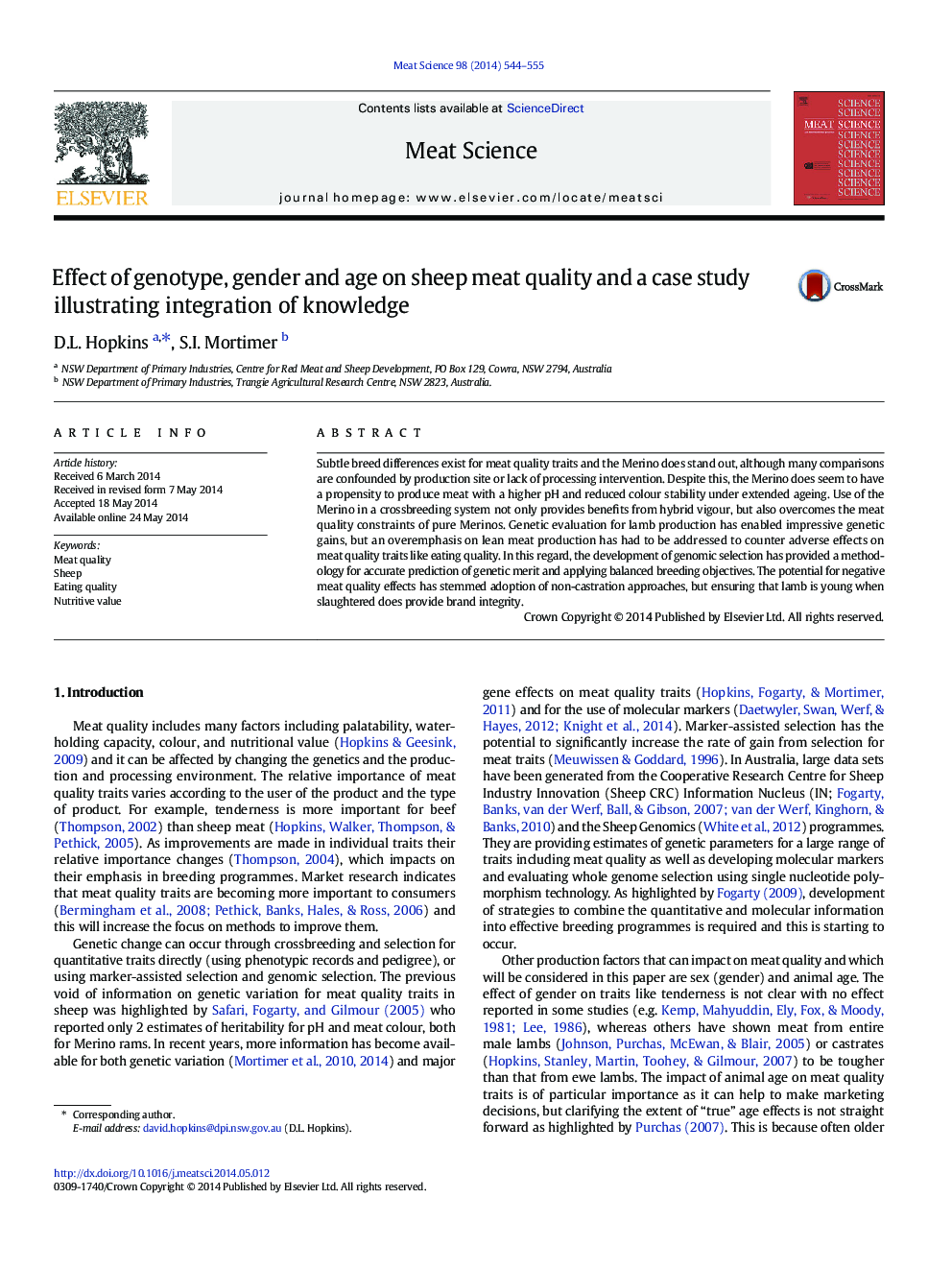| Article ID | Journal | Published Year | Pages | File Type |
|---|---|---|---|---|
| 5791366 | Meat Science | 2014 | 12 Pages |
â¢Subtle breed differences exist for meat quality traits in sheep.â¢If lean meat yield is a focus potential negative effects on meat quality can occur.â¢Non-castration approaches can lead to adverse effects on meat quality.â¢Ensuring that lamb is young when slaughtered does provide brand integrity.â¢Integration of breeding strategies and market focus can produce high quality meat.
Subtle breed differences exist for meat quality traits and the Merino does stand out, although many comparisons are confounded by production site or lack of processing intervention. Despite this, the Merino does seem to have a propensity to produce meat with a higher pH and reduced colour stability under extended ageing. Use of the Merino in a crossbreeding system not only provides benefits from hybrid vigour, but also overcomes the meat quality constraints of pure Merinos. Genetic evaluation for lamb production has enabled impressive genetic gains, but an overemphasis on lean meat production has had to be addressed to counter adverse effects on meat quality traits like eating quality. In this regard, the development of genomic selection has provided a methodology for accurate prediction of genetic merit and applying balanced breeding objectives. The potential for negative meat quality effects has stemmed adoption of non-castration approaches, but ensuring that lamb is young when slaughtered does provide brand integrity.
